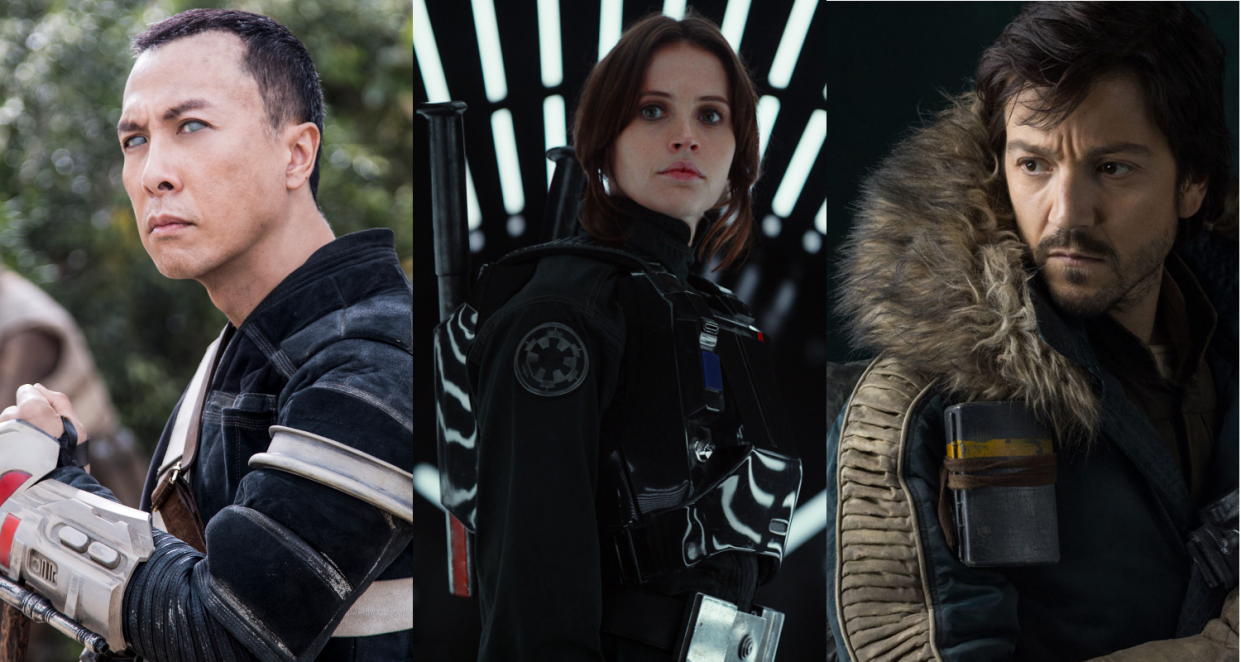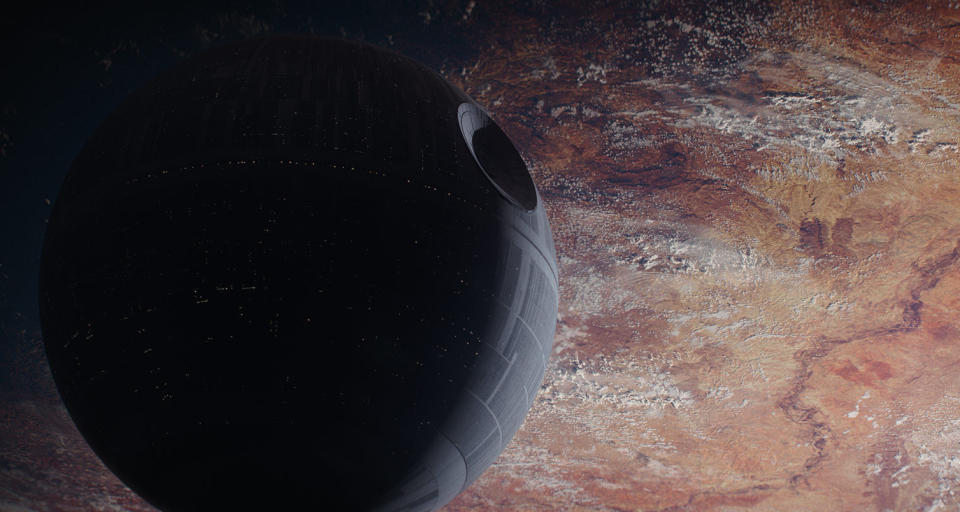How Rogue One took a story that didn’t need telling and made the perfect Star Wars prequel

“Rebel spaceships, striking from a hidden base, have won their first victory against the evil Galactic Empire. During the battle, Rebel spies managed to steal secret plans to the Empire’s ultimate weapon, the DEATH STAR, an armoured space station with enough power to destroy an entire planet.”
This, from the opening crawl of ‘A New Hope’, served as the basis for ‘Rogue One: A Star Wars Story’ some 40 years later, but already told us all we needed to know. ‘Rogue One’ was a story that didn’t need to be told, but it defied all expectations to prove it was a story worth telling.
Better still, ‘Rogue One’ is the perfect prequel – one that doesn’t just supplement ‘A New Hope’, but enriches it. How though, did it ac?
– The 10 best movie moments of 2016
– Rogue One composer Michael Giacchino reveals puntastic titles for Star Wars score
– Rare Lord of the Rings behind the scenes photos shared by Orlando Bloom
Director Gareth Edwards and the film’s four writers did this by making their story about the Rebellion’s journey from a directionless and friable collective to a cohesive and driven unit. ‘Rogue One’ is about the rebellion more than it is about any individual character.
Jyn Erso (Felicity Jones) is the main protagonist and key to the plot of course, but she’s also one of numerous characters that represent particular aspects of the Rebellion on a larger scale.
Warning: Major spoilers follow.
In the original ‘Star Wars’ trilogy the Rebellion’s battle against the Empire is cast in black and white, light and dark. ‘Rogue One’ is about the grey area where the Rebellion was born, and how the introduction of hope – of a little light in the darkness – unifies them.
Cassian Andor (Diego Luna) represents the murkier, more ethically-questionable side of the Rebellion. Early on we see him kill an informant in cold blood, and later he’s just a second away from carrying out the assassination of Jyn’s father Galen (Mads Mikkelsen) under Rebellion orders.
He’s been fighting since he was six, which would have been around the time the Emperor first rose to power. When Cassian offers his support to Jyn prior to the Battle of Scarif, he does so with a group comprised of people who have done bad things for the Rebellion and want to atone. He does also, but we’ll get to that later.
This also extends to Bodhi Rook, the Imperial pilot who defects after seeing the devastation the Empire is causing on his home planet of Jedha. He’s seen what they’ve done and he’s scared of their power, but over the course of the film he grows in confidence and defiance as a Rebel, eventually issuing orders when the ground team are trying to broadcast the Death Star plans from Scarif to the nearby Rebel fleet.
Chirrut Îmwe (Donnie Yen) represents faith in the force. His belief is unshakable, a constant source of optimism and insight that helps drive the film and its characters. His mantra – “I am one with the Force. The Force is with me” – is similar to the Rebellion’s familiar, “May the Force be with you”, and proves a similar source of inspiration. It’s a rallying cry based on faith in whatever the individual chooses – be it spiritual, karmic or religious.
Baze Malbus (Wen Jiang) isn’t as devoted a believer, but he sees the bravery belief in the Force offers his friend and partner Chirrut – who he sticks by as he has done for a long time prior the events of the film. He represents the loyalty and love (brotherly or romantically – it’s not made clear but entirely works either way) that drives the Rebellion.
This disparate group are the Rebellion, and it’s their rogue actions – embarking on the mission to Scarif despite the Rebel council not reaching a consensus – that enables the battle, unites the Rebel effort and enables the Empire’s eventual defeat in the original trilogy.

The group’s two lead characters, Jyn and Cassian, have a journey as well. At the start, much like the Rebellion itself, Jyn is directionless and lacks motivation. It’s when she sees her father’s message, learns how he rigged with Death Star with an exploit and their love is rekindled, that she finds the purpose and chooses to fight.
Cassian meanwhile seeks redemption, and over the course of the film he finds it as his belief in Jyn and her father grows. By the film’s end both accept their fate – death by Death Star – because with the plans sent, he’s done all he can to redeem himself and she’s accepting of a meaningful death knowing there’s hope out there.
Jyn represents the Rebellion’s hope, Cassian its redemption, Chirrut its faith, Baze its loyality and Bodhi its defiance. Each of these characters dies on Scarif for a greater good that by the end of the film they all believe in. It’s their sacrifice that creates the reinvigorated Rebellion that encompasses each of these traits before Luke Skywalker and Han Solo join it in ‘A New Hope’.
On the other side of the coin we get to see the Empire’s efforts to control the galaxy through fear and expunge it of any remnants of the Jedi Order. We also see the internal-politics that favoured a character like Grand Moff Tarkin (Peter Cushing) over Director Orson Krennic (Ben Mendelsohn) effectively due to his class. This is something that’s been discussed before.
We also see Darth Vader in full force, showcasing exactly how powerful and imposing he is during the final scene, in which he slaughters a corridor of Rebels in an unsuccessful effort to get the Death Star plans. He’s terrifyingly powerful, and this helps inform the depiction of Vader in the original trilogy.
‘Rogue One’ succeeds because it fleshes out the world already set up wonderfully in George Lucas’s 1977 original, and gives the Rebellion’s efforts to defeat the Empire further purpose and significance by depicting the sacrifice that enabled Luke to come along and save the galaxy.

 Yahoo Movies
Yahoo Movies 

